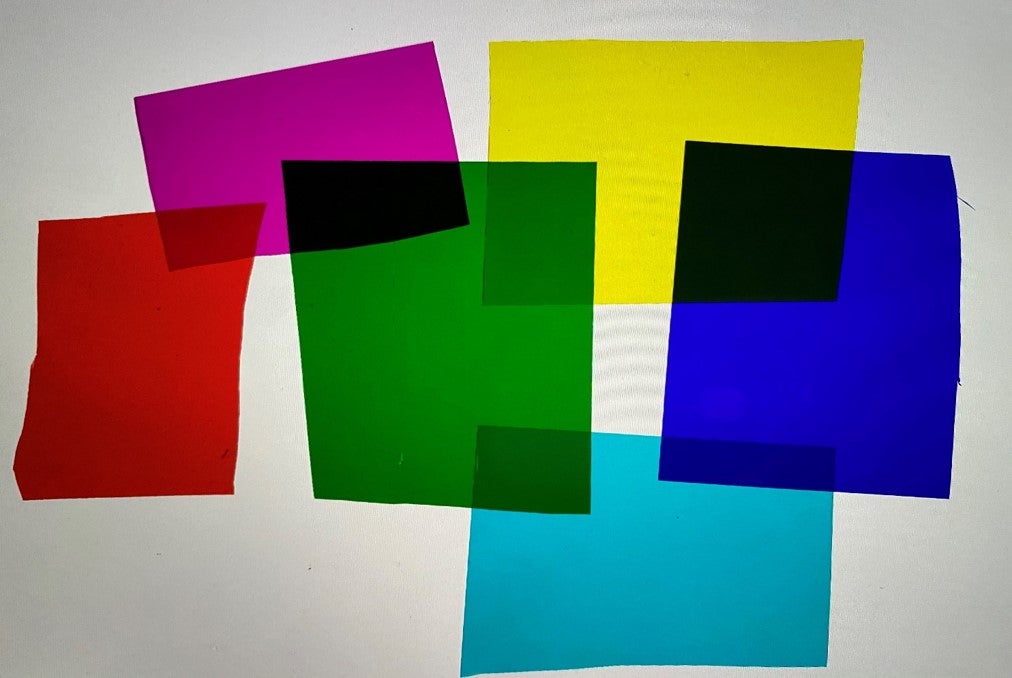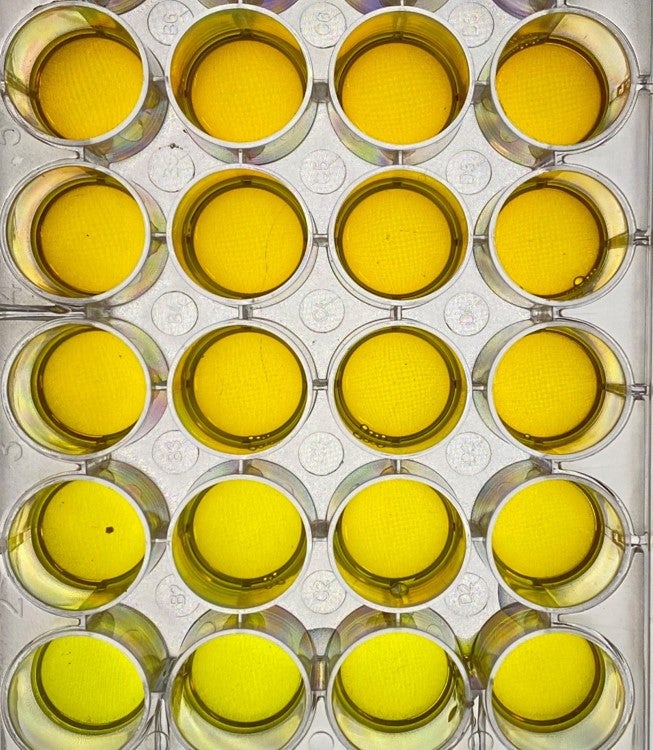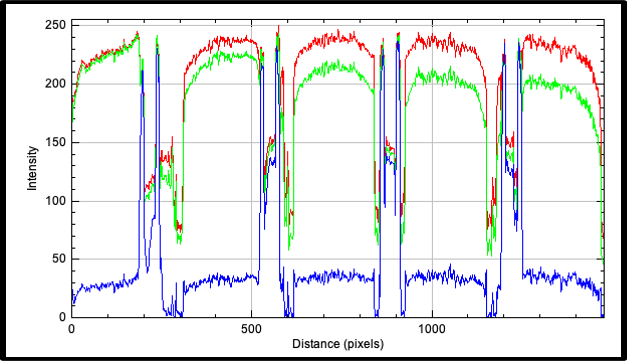ShaKayla Moran, Dr. Leslie Atkins Elliott, Graham Johnson

Science Timeline
Scientific Practice
- We believe that “…the ultimate goal of science…is to construct a coherent understanding” [2]. We consider science the pursuit of developing theory and creating a phenomenological model.
- The student ink experiment was a clear example of science. The student developed a research question, devise an experiment, successfully collect data, and gained new knowledge about the properties of the inks.
- The student used observations and knowledge to advance their theory and develop a model of the ink and filters.
Science Seen
Science was implemented by the students during the ink and filter experiments. Creating the experiment to stack filters to identify a model of light is an example of science. The tinkering of the filters also supports scientific practices and provides a precursor to engineering. Creating the different ink concentrations in the ink experiment was also an example of science.
Science Answered
Through scientific investigation, the students were able to answer multiple questions.
- How do the filters get “colored” by white light?
- How does light react with ink to “color” it?
- How do filters and ink differ? Or are they the same?
Discussion
Throughout the literature, science frequently involves using experimentation to discover new knowledge or gain new scientific understanding. Engineering is considered a practice or skill set applied to solve a problem. Engineering is often viewed as the application of science. With these definitions in mind, and our own classifications, we are able to identify when engineering occurs. From this identification we hope to inform the science curriculum to include engineering in an authentic way to both the science and engineering field.
Methods
Research Question
Where and when does engineering occur during scientific inquiry?
The Course
Data collected from Boise State University STEM-Ed 350 class. This course is part of IDoTeach program for future STEM educators. Total of 5 students in class.
Class Topic

- Is every Color in the Rainbow?
- Class spent semester exploring light and color.
- After discussion, students were given colored filters and flashlights to tinkering with.
Filter Tinkering
Students were able to develop a model of light from tinkering. Model explained how white light reacts with filters to “create” color. The students noticed that each filter removes a percentage of each wavelength, and that stacking these filters multiples the percentages.
Example of Filter Method
- One filter = 100% – 50% = 50% blue eliminated
- Two filters = 100% – (50% x 50%) = 75% blue eliminated
- Red, Green and Blue wavelengths found to be important
Expanding the Exploration
After filters, the students moved to inks, particularly printer inks. They considered the differences between the inks and filters, and how color differs in these two mediums. After a day of tinkering with the materials, the students created their own experiments to explore personal questions they had about the inks.
The Experiment
One student set out to see if the printer inks reacted to light in the same way as the filters. This student aimed to see if light decreased as ink concentration increased, similar to filter layering. The student wanted to know if you could “stack” ink the same way you can stack filters.
Procedure

- Make 10% yellow ink- water solution.
- Using well plate, place 1mL of water in each well, then add 1 drop of yellow ink into 1st well, 2 drops in 2nd well, etc.
- Once ink concentrations are mixed, place well plate on blank white computer screen. Take photo of well plate.
- Run photo through Image J.
- Compare ink Image J graph to gel Image J graph looking at % total resulting light.
The Results
The Image J graphs, allowed the student to determine what yellow ink concentration was most similar to the yellow filter. The student encountered some issues during imaging, specifically with the camera lens curvature and overhead lighting.

Engineering Timeline
Engineering Definition
The Next Generation Science Standards classify engineering as, “… any engagement in a systematic practice of design to achieve solutions to particular human problems” [1]. For this study, we define engineering as the process of designing, and implementing engineering design to solve a problem. Engineering must also encompass all alternative designs that were not executed. It is this process of considering other design options that indicates an engineering mindset.
Engineering Seen
With the filter experiments, the students exhibited engineering design by stacking the filters. This allowed the students to solve a problem by determining the light that was eliminated by each filter. For the ink experiment, the student was able to implement engineering design, and solve a problem by using Image J to compare the light that penetrated the ink and the filter.
Engineering, But…
In the ink experiment, the student successfully created a design solution to the problem. However, there was not evidence that the student considered alternative possibilities for the experimental design. Therefore, this experiment does not fully fit our definition of engineering. In order for this experiment to also be considered engineering the student must have explored many different design solutions before implementing the best design.
Conclusion
- Students used scientific practices to develop models and design experiments that explain scientific observations.
- Students used design to solve a range of problems. However they did not consider alternative options for designs so they did not fully implement engineering design into their scientific experiments.
- For future research, we hope to continue studying and finding examples of engineering during scientific inquiry. Another interest is theory building, and how theory leads to engineering opportunities in scientific inquiry
References
- Next Generation Science Standards. (2013). APPENDIX I – Engineering Design in the NGSS. April, 7.
- Hammer, D., & Zee, E. (2006). Seeing the science in children’s thinking (pp. 13-37). Portsmouth, NH: Heinemann.
- For a full list of references, please visit this website: https://sites.google.com/u.boisestate.edu/undergraduate-research-showcas/home?authuser=1
Acknowledgements
Big thanks to the National Science Foundation for funding this research. Thanks to the Biology Department and the College of Education at Boise State University for the opportunity to conduct this research.
Additional Information
For questions or comments about this research, contact ShaKayla Moran at shakaylamoran@u.boisestate.edu.